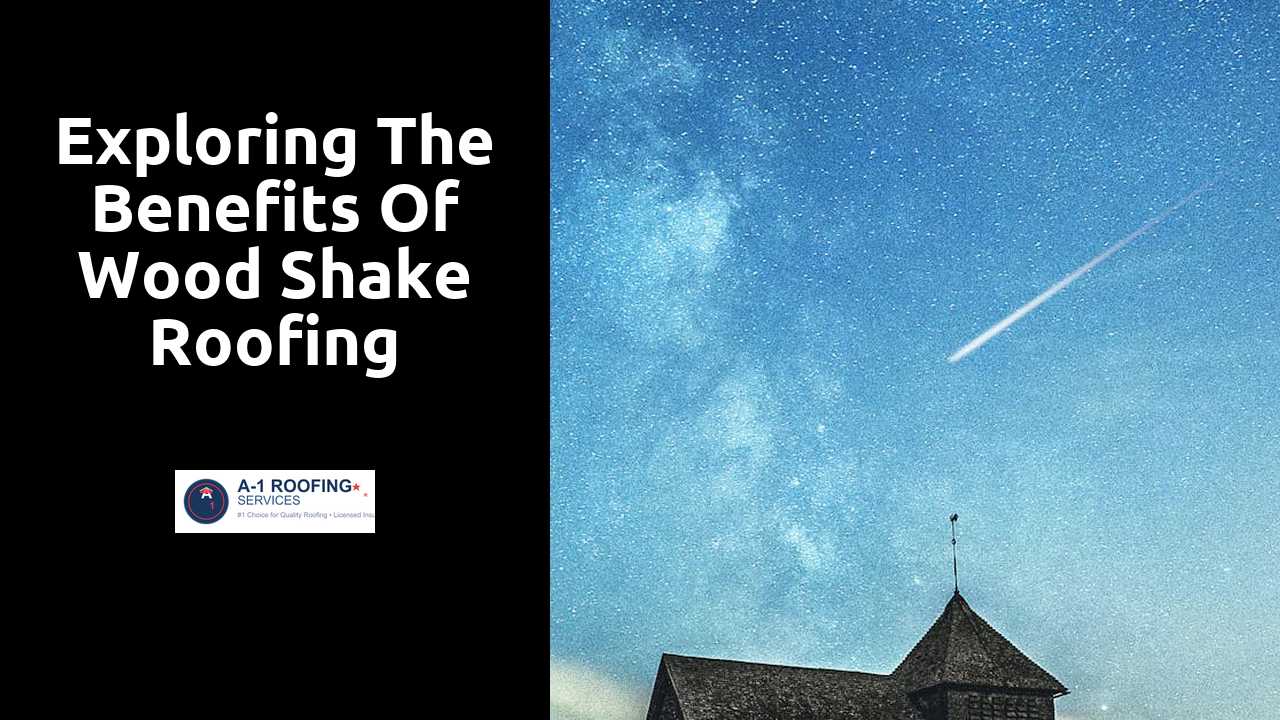
Exploring the Benefits of Wood Shake Roofing
Table Of Contents
Cost Considerations
When evaluating wood shake roofing, the initial investment is often higher compared to other roofing materials. The cost reflects the premium quality of the wood used, as well as the craftsmanship involved in installation. Homeowners may find that while the upfront expenses can be significant, the aesthetic appeal and potential energy efficiency might justify the expense.
Long-term value plays a crucial role in the overall cost-effectiveness of wood shake roofs. These roofs can last several decades with proper maintenance, potentially reducing the need for frequent replacements. Additionally, the natural insulation properties of wood can lead to lower energy bills over time, providing financial relief that further enhances the roof's value.
This is an essential article for anyone looking to learn more about the topic.
Initial Investment vs. Long-Term Value
When considering roofing options, the initial investment plays a significant role in homeowners' decisions. Wood shake roofing typically entails a higher upfront cost compared to alternatives like asphalt shingles. This premium pricing reflects the quality of materials and the craftsmanship involved in installation. Although the initial outlay may give some buyers pause, understanding the long-term benefits can shift perspective.
In terms of longevity, wood shake roofs can outperform less expensive options when properly maintained. They offer a lifespan that can exceed 30 years under ideal conditions, potentially making them more economical over time. Their natural insulation properties also contribute to energy savings, further enhancing their value. By weighing the initial costs against these long-term advantages, homeowners can make informed choices that align with both budget and durability.
Maintenance Requirements
Proper upkeep ensures that wood shake roofing retains its appeal and effectiveness over the years. Regular inspections should be conducted to identify potential issues such as loose or damaged shakes, which can compromise the roof's integrity. Addressing minor problems promptly can prevent more extensive and costly repairs down the line. Additionally, cleaning debris from the roof and gutters helps maintain proper drainage, reducing the risk of water damage.
Routine maintenance tasks often include resealing or applying protective treatments to enhance the wood's durability against moisture and pests. Applying these treatments every few years can significantly prolong the lifespan of the roofing material. Homeowners should also be aware of the signs of decay or mold, which may indicate the need for immediate attention. Following these guidelines can contribute to a well-maintained and aesthetically pleasing roof.
Tips for Proper Care and Upkeep
Regular inspections play a crucial role in maintaining the integrity of wood shake roofing. Homeowners should check for any loose or damaged shakes at least twice a year, particularly following severe weather events. Keeping gutters and downspouts clear of debris helps ensure proper drainage, which minimizes the risk of water damage. Additionally, addressing minor issues promptly can prevent more significant problems down the line.
Applying a protective sealant can enhance the lifespan of wood shakes. It is advisable to choose products specifically designed for wood roofing and to follow manufacturers' guidelines for application. Cleaning the surface with gentle solutions can help remove moss or algae growth. Investing time in these maintenance practices contributes to the aesthetics and longevity of the roof, making it a worthwhile commitment for any homeowner.
Weather Resistance
Wood shake roofing offers an impressive level of weather resistance, especially when it comes to wind and rain. The natural materials used in their construction enable them to withstand harsh weather conditions better than many synthetic alternatives. Once treated with protective coatings, wood shakes can repel water effectively, reducing the risk of leaks and moisture damage over time. The inherent qualities of wood also provide a certain degree of insulation that helps maintain a stable internal temperature during fluctuations in weather.
In regions prone to extreme conditions, such as heavy snowfall or intense storms, wood shakes can perform admirably with proper installation. The layout of the roofing allows moisture to drain efficiently, preventing the accumulation of ice and snow that can weigh heavily on roofs. Additionally, when regularly maintained, wood shake roofs can resist damage from UV rays, minimizing fading and degradation even after prolonged exposure to sunlight. With the right care, wood shake roofing remains a reliable option for protecting homes from the elements.
Performance Against Extreme Conditions
Wood shake roofing is renowned for its ability to withstand various extreme weather conditions. The natural materials used in shakes create a durable barrier against intense sunlight, heavy rain, and even snow. This roofing type exhibits good thermal properties, which helps to regulate temperatures inside the home. Additionally, it resists curling or cracking under heat, allowing for longevity even in challenging climates.
In areas prone to high winds, wood shake roofs perform admirably when installed with proper techniques. The interlocking design of the shakes contributes to their resilience against uplift forces. Furthermore, when treated with fire-retardant coatings, wood shakes can significantly improve their ability to withstand flames. This characteristic is particularly beneficial in regions at risk of wildfires, ensuring that homeowners feel more secure amidst natural threats.
Related Links
A Guide to Synthetic Roofing Materials for Modern HomesChoosing Tile Roofing: Pros and Cons for Homeowners